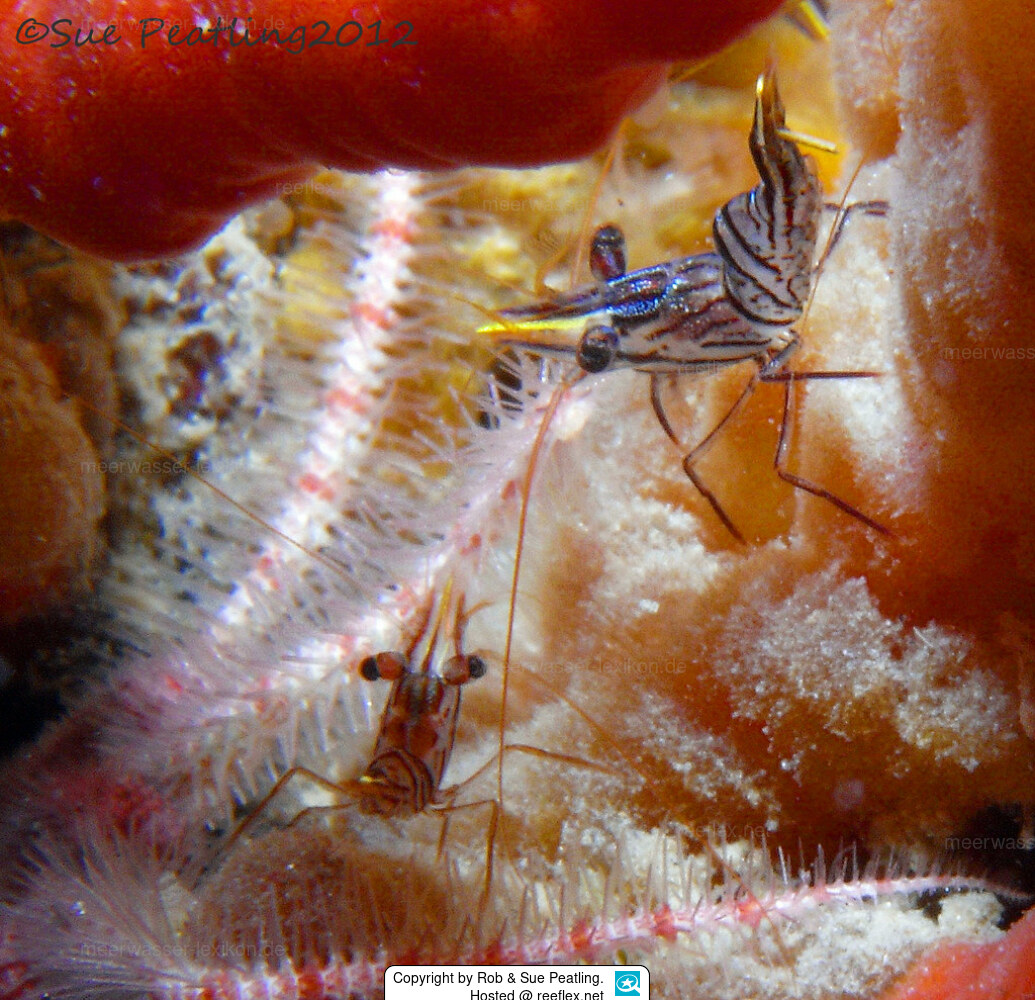Info
Rhynchocinetes australis Hale, 1941
This uncommon shrimp occurs in rocky reefs, in crevices or among seaweed and seagrass iin South Australia, Victoria and Tasmanian.
It´s body is transparent with thin red lines and spots, Hinge-beak Shrimps can move the triangular piece of carapace between their eyes (rostrum) up and down, scientists suppose it is thought to be a threat display.
This uncommon shrimp occurs in rocky reefs, in crevices or among seaweed and seagrass iin South Australia, Victoria and Tasmanian.
It´s body is transparent with thin red lines and spots, Hinge-beak Shrimps can move the triangular piece of carapace between their eyes (rostrum) up and down, scientists suppose it is thought to be a threat display.







 Rob & Sue Peatling
Rob & Sue Peatling













